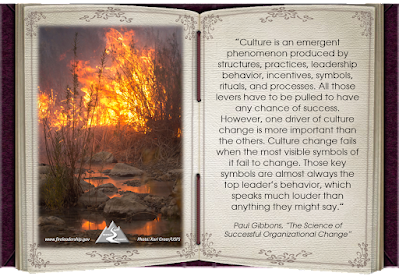What is Corporate Culture?
Let's take a look at corporate culture by watching "It's All About Culture - What is Corporate Culture."
Thoughts to Ponder
- What is the personality of your organization?
- What are your culture's norms of behavior?
- Does your culture feel right?
- Does your culture bind your time together?
- Is your culture influenced by your leaders?
- Do you fit within your culture?
- Do you know what type of culture you work within?
- Track small failures.
- Resist oversimplification.
- Maintain a sensitivity to operations.
- Maintain capabilities for resilience.
- Take advantage of shifting locations of expertise.
Many HROs adopt the following subcultures which James Reason says, in Managing the Risks of Organizational Accidents, promotes a safety culture (adapted from the GAIN Working Group E’s A Roadmap to a Just Culture – Enhancing the Safety Environment):
- Just culture – An atmosphere of trust in which people are encouraged (even rewarded) for providing essential safety-related information, but in which they are also clear about where the line must be drawn between acceptable and unacceptable behavior.
- Reporting culture – An organizational climate in which people are prepared to report their errors and near-misses.
- Learning culture – An organization that must possess the willingness and the competence to draw the right conclusions from its safety information system and will to implement major reforms.
- Flexible culture – A culture in which an organization is able to reconfigure themselves in the face of high tempo operations or certain kinds of danger – often shifting from the conventional hierarchical mode to a flatter mode.
In a Harvard Business Review blog posting by Peter Bergman called The Best Way to Use the Last Five Minutes of Your Day, Bergman believes that organizations should teach their employees to “look at their past behavior, figure out what worked, and repeat it while admitting honestly what didn’t and change it.” He goes on to say, “That’s how people become life-long learners. And it’s how companies become learning organizations.” Do you take time at the end of the day to reflect upon your day—to see if what you expected to happen actually happened? Are you a life-long learner? Does your organization foster a safety culture?
Wildland Fire Leadership Challenge - Digging a Little Deeper
The Transport Canada website hosts Reason’s Checklist for Assessing Institutional Resilience. How does your organization rate?

No comments:
Post a Comment